Last Chance to Catch NYC's Holiday Notalgia Train
We met the voices of the NYC subway on our nostalgia ride this weekend!

Women’s History Month can be traced back to the first International Women’s Day in 1911. But it wasn’t until 1978, when a school district in Sonoma, California got the ball rolling by participating in a Women’s History Week program. The following year, a conference about women’s history was held at Sarah Lawrence College, with co-sponsors, Women’s Action Alliance, and the Smithsonian Institution. Finally in February 1980, President Jimmy Carter issued a presidential proclamation declaring the week of March 8th as National Women’s History Week. It has become a month-long event, highlighting the contributions of women in history and society today. Here are 10 ways to celebrate the occasion, ranging from art to activism.
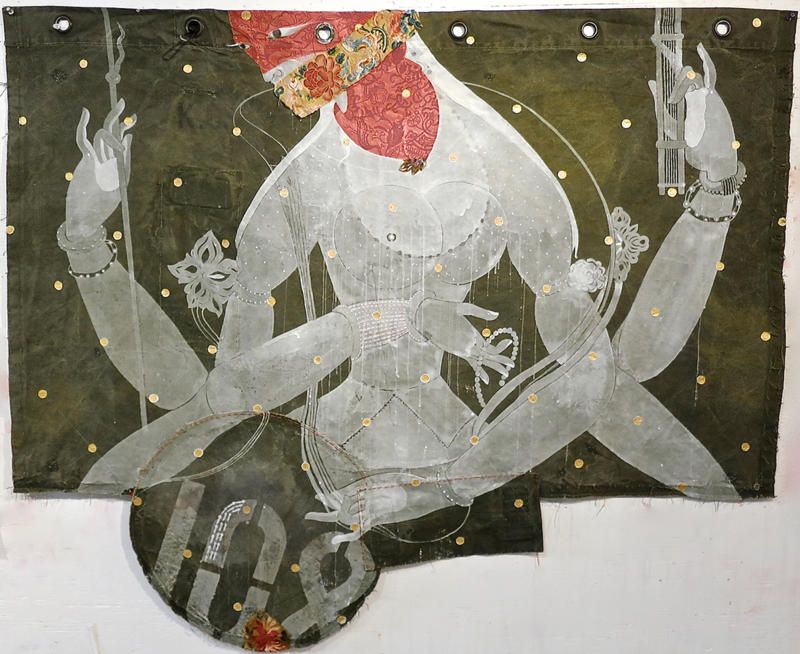
Artist Michelle Martello. Image via Pen + Brush
Pen + Brush has been dedicated to promoting the work of women in literature and visual arts for more than 122 years. On exhibit this month is a solo show by Italian born artist Michelle Martello. Future is Goddess: Michela Martello Solo Show is a site-specific graffiti mural, featuring three goddesses that represent a mix of cultural backgrounds. The piece is created on the gallery wall, where viewers are invited to interact with the artwork by tagging. Martello’s title explores her vision of the phrase “Future is Female,” suggesting the rise in feminine power in response to our current political and social climate. Future is Goddess will be on view until April, 22, 2017 at Pen + Brush, 29 East 22nd Street, in the Flatiron District.
The permanent exhibit, Activist New York, at The Museum of the City of New York, explores the history of agitation and social activism in New York City from the 17th century to present day. Part of the exhibit, The New York Women Who Dismantled Prohibition, tells the lesser-known story of the women who became active opponents of the 18th amendment, which outlawed the manufacture, sale and transport of alcohol, during the Prohibition era, from 1919 to 1933. Activist New York, at The Museum of the City of New York, is located at 1220 Fifth Avenue, at 103rd Street. While you’re there, visit Muslim in New York, a photo exhibit, still on view.
Celebrating the 10th anniversary of the Elizabeth A. Sackler Center for Feminist Art, Target First Saturdays will highlight female-identified and gender-nonconforming artists, as well as organizations that challenge gender conventions. The programming is part of A Year of Yes: Reimagining Feminism, and will take place throughout 2017.
Also on view until July 23, 2017 is Georgia O’Keeffe: Living Modern, an exhibit which focuses on her paintings and photographs, as well as her wardrobe and its artistic value. The exhibit is organized in sections, running from her early years to her years in New York (in the 1920s and 1930s), to her final, very colorful years in New Mexico. Brooklyn Museum’s Target First Saturdays events are free. The Museum is located at 200 Eastern Parkway in Brooklyn.
The 106th Commemoration of the Triangle Shirtwaist Factory Fire will take place on March 24, in honor of the 146 workers who lost their lives during the tragedy, which took place on March 25, 1911. The Triangle Factory was located on the top three floors of the Asch Building, on the corner of Greene Street and Washington Place. Most of the people who perished in the fire were young, immigrant women. Many were teenagers, who worked twelve-hour days, seven days a week. Of the four elevators in the building, only one was operational that day, which forced the workers to use the building’s two staircases. However, one staircase was locked. The tragedy brought widespread attention to sweatshop conditions in factories, and led to increased union organizing and regulations. The commemoration will take place on the corner of Washington Place and Greene Street, on Friday, March 24th from noon to 1 pm.
On the heals of Black History Month, MMN El Barrio Firehouse Community Center presents the exhibit, Natural Hair…Pride or Status? This group exhibit explores the meaning and feeling behind hair, taking the viewer through an evolutionary timeline that spans to present day; MMN (Manhattan neighborhood Network) opened this state-of-the-art community media center at the old Engine Co. 53 Firehouse in 2012. It is located at 175 East 104th Street, between Lexington Avenue and Third Avenue.
The Schomburg Center for Research in Black Culture presents Women’s Jazz Festival: Ella, Ella: A Centennial Celebration of Mama Jazz. There’s still time to take part in this month-long celebration, where you can join in a conversation about the legacy of Ella Fitzgerald (There’s Something About Ella), and listen to the sounds of the French duo Les Nubians, who will perform on the final evening of the festival.
Women’s Jazz Festival: Ella, Ella: A Centennial Celebration of Mama Jazz will continue through March at The Schomburg Center for Research in Black Culture, a part of the New York Public Library, located at 515 Malcolm X Blvd. (Lenox Avenue), at 135th Street. WBGO Jazz is a media partner of this event. While you’re there, be sure to see the exhibit, Black Power!, on view through December, 2017.
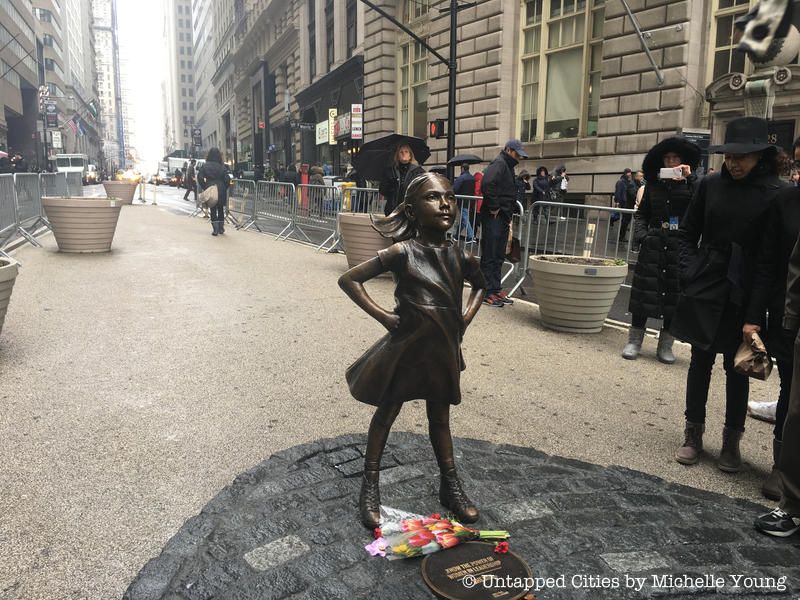
The investment management company, State Street Global Advisors, with support from the ad agency, McCann New York, commissioned a 50-inch tall, 250 pound bronze statue of a Fearless Girl, standing in a defiant position and set in front of the eleven-foot tall, 7,000 pound iconic Charging-Bull sculpture. In honor of International Women’s Day, this sculpture was commissioned to symbolize the lack of women on Wall Street Boards. However, Fearless Girl has not been received as such by everyone. While it has drawn crowds of onlookers, eager to take selfies, some have suggested that the placement of the statue implies that women are not part of the Wall Street culture, or that the current focus of the Women’s Movement is directed at something else altogether. It has also brought out some lude behavior.
Created by artist, Kristen Visbal, Fearless Girl features a plaque at the foot of the statue that says “Know the power of women in leadership, SHE makes a difference.” It will be on view in Bowling Green Park through April 2nd—although a petition has been circulating for its permanent installation.
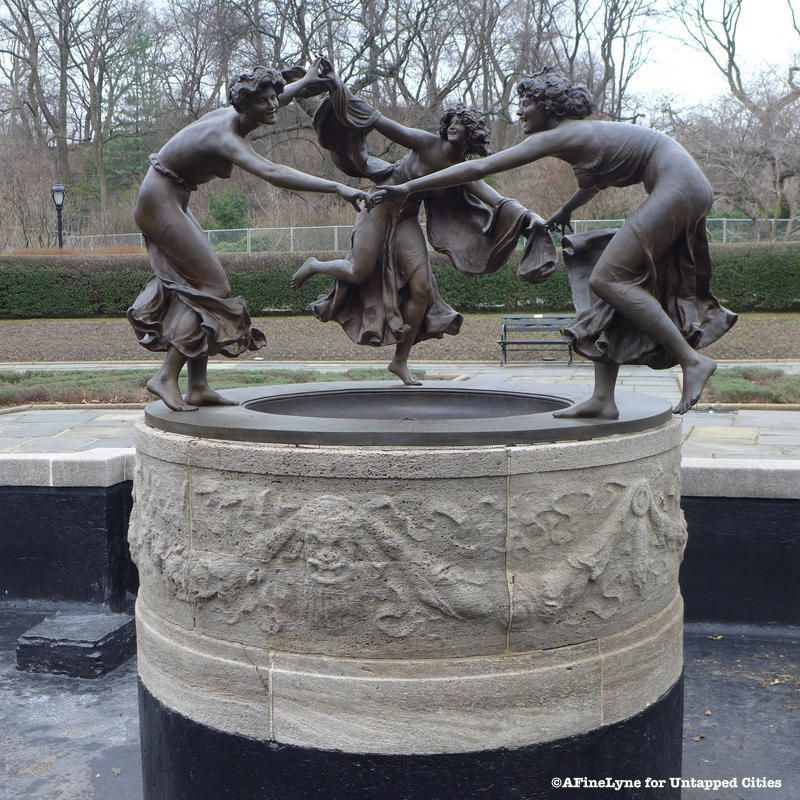
Three Dancing Maidens sculpture by artist Walter Schott is located at the Untermyer Fountain in Central Park’s Conservatory Garden
New York City parks are celebrating Women’s History Month with a full calendar of events honoring women throughout the boroughs, as well as iconic figures such as Frida Kahlo and Georgia O’Keeffe. The events will take place in historic sites, such as the Alice Austen House Museum and the Morris-Jumel Mansion. Women’s History Month in the Park concludes on March 31st at Highbridge Recreation Center, with Art By You: Paint Night, inspired by the works of Georgia O’Keeffe. Check the NYC Parks Department website for more information.
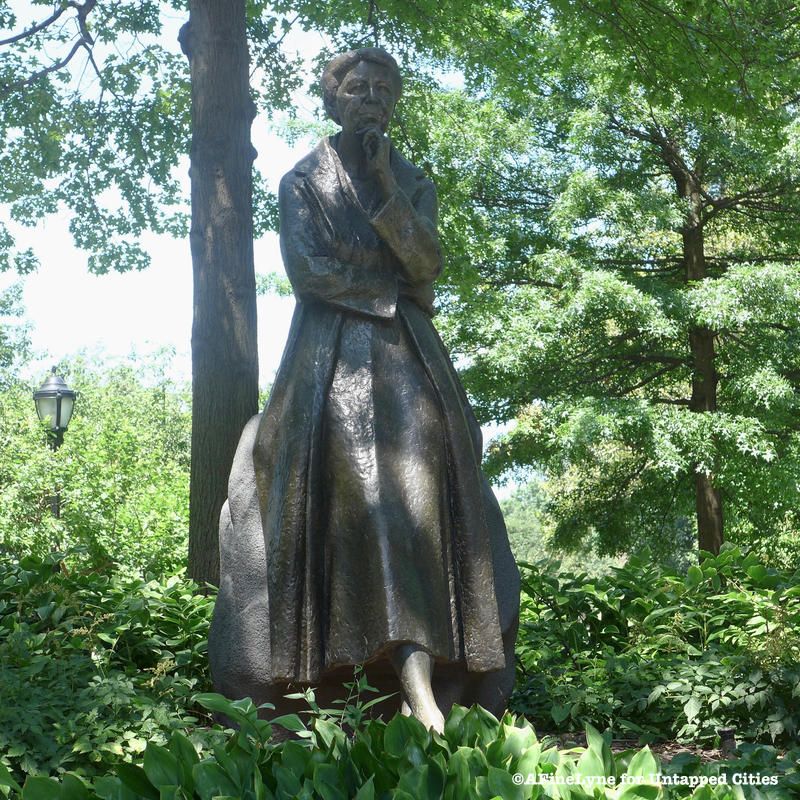
Frances Hodgson Burnett Memorial Fountain, created by sculptor, Bessie Potter Vonnoh, is a tribute to the author of the children’s book, The Secret Garden. The sculpture is currently out for repair, but will be back in time for the Conservatory Garden’s annual fund-raising event on May 1st.
The Eleanor Roosevelt Monument, by artist Penelope Jencks, was dedicated in 1996 at 72nd Street and Riverside Park. Hillary Rodham Clinton, who was the First Lady of the United States at the time, was in attendance for the event.
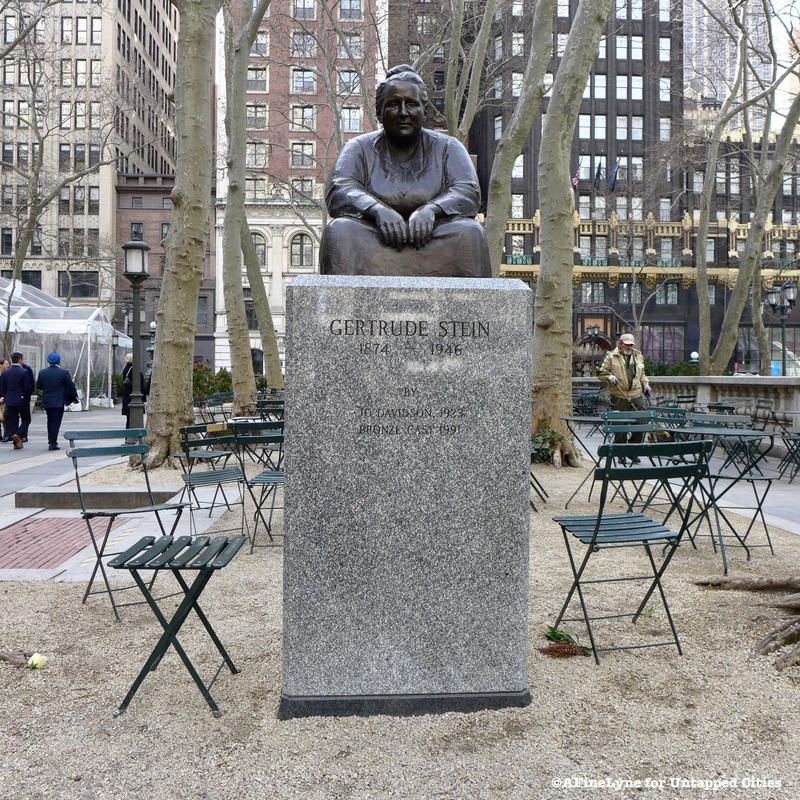
The Gertrude Stein sculpture was installed in Bryant Park in 1992, based on a model made by Jo Davidson in Paris in 1923. Sitting behind the New York Public Library, near 41st Street, the statue honors the significant literary contributions of American author and arts patron, Gertrude Stein.
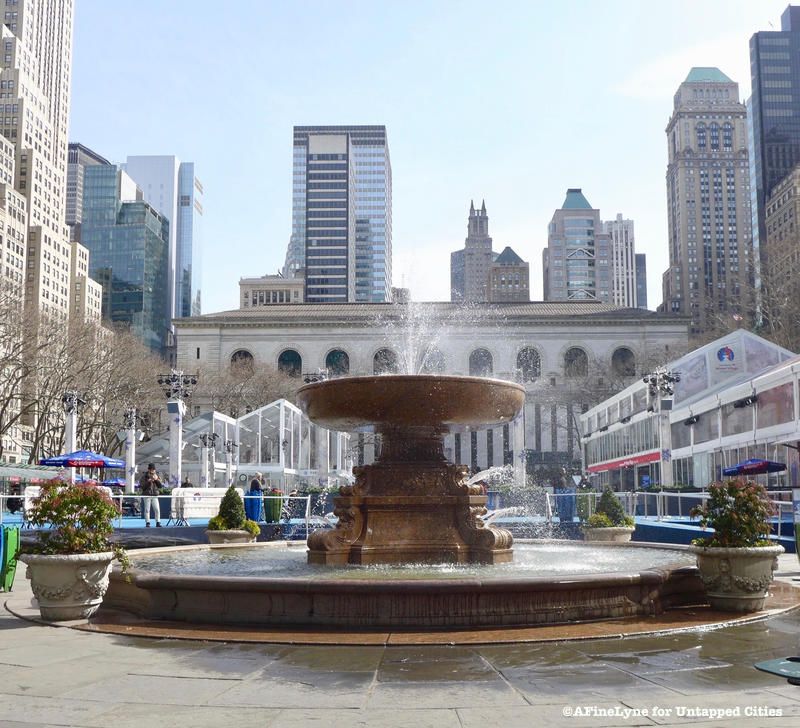
The city’s first public memorial dedicated to a woman—the pink granite Josephine Shaw Lowell Memorial Fountain—is located on the Sixth Avenue side of Bryant Park. Dedicated in 1912, the fountain was designed by Charles Adams Platt. Josephine Shaw Lowell was a social worker and the founder of the Charity Organization Society.
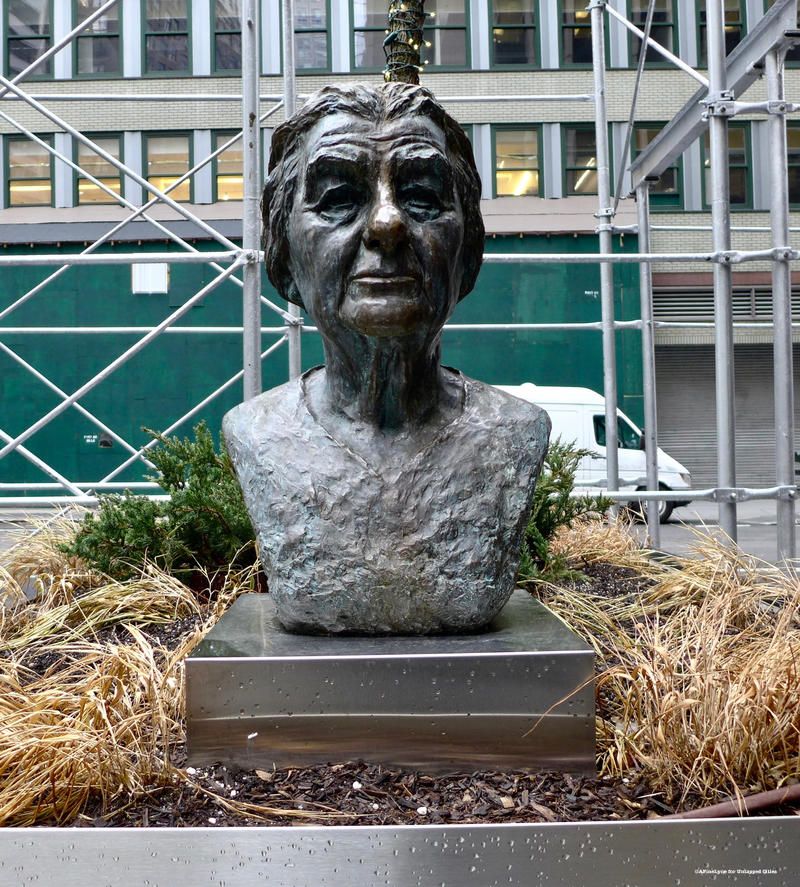
The Golda Meir sculpture disappeared for a while, but has returned to the Golda Meir Memorial Square between 39th and 40th Streets on Broadway. The bust was commissioned by the Jewish Community Relations Council of NYC (JCRC), and the City of New York. The Plaza appears to be under renovation, as the bust is oddly situated in one of the raised gardens. While you’re there, you might enjoy A Fancy Animal Carnival, on view through April, 2017.
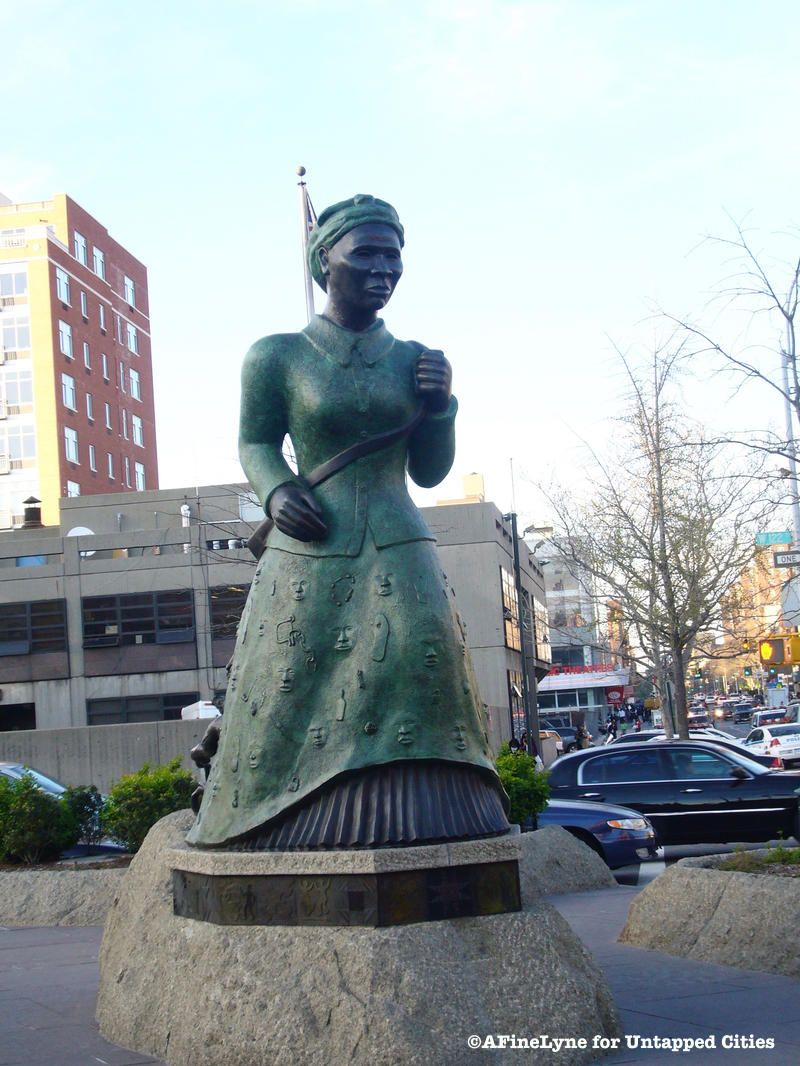
Swing Low: Harriet Tubman Memorial Sculpture by artist Alison Saar honors the legacy of Harriet Tubman and her fight against slavery. On the skirt, viewers will notice symbols of anonymous passengers of the Underground Railroad. In addition, the granite base of the monument holds bronze tiles, depicting events in Tubman’s life. Swing Low, which stands at the crossroads of St. Nicholas Avenue, West 122nd Street and Frederick Douglass Boulevard in Harlem, is part of the Department of Cultural Affairs’ Percent for Art Program.
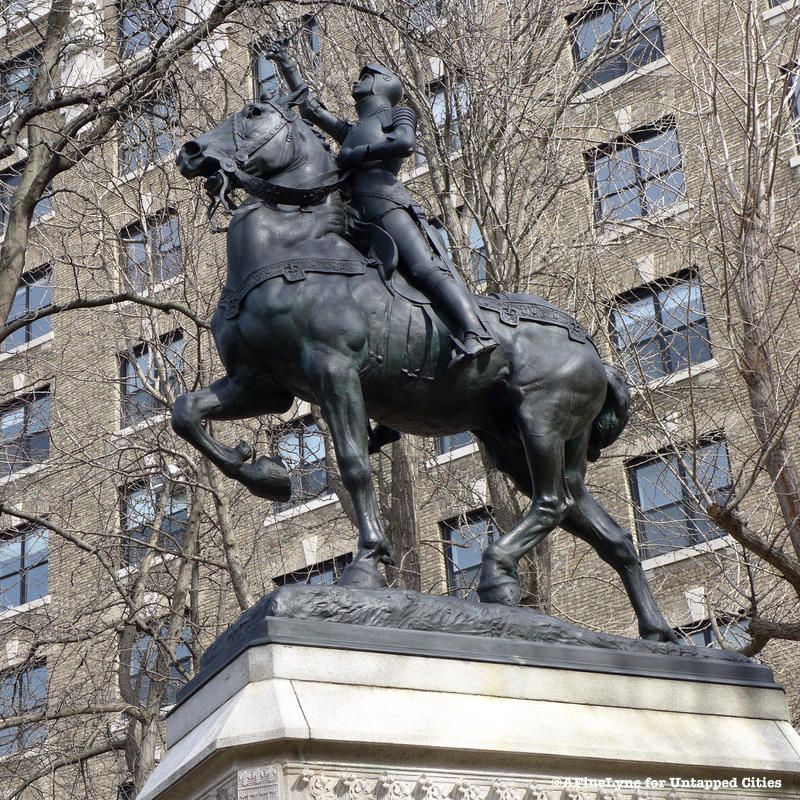
The Joan of Arc Statue by artist Anna Vaughn Hyatt Huntington was dedicated in 1915. The pedestal was designed by architect, John Van Pelt, and is located at the top of the steps in the Riverside Park island at 93rd Street. The statue was part of an Adopt-a-Monument Program in 1987, which was a joint partnership between the Municipal Art Society (MAS), the Department of Parks & Recreation, and the Art Commission of the City of New York.
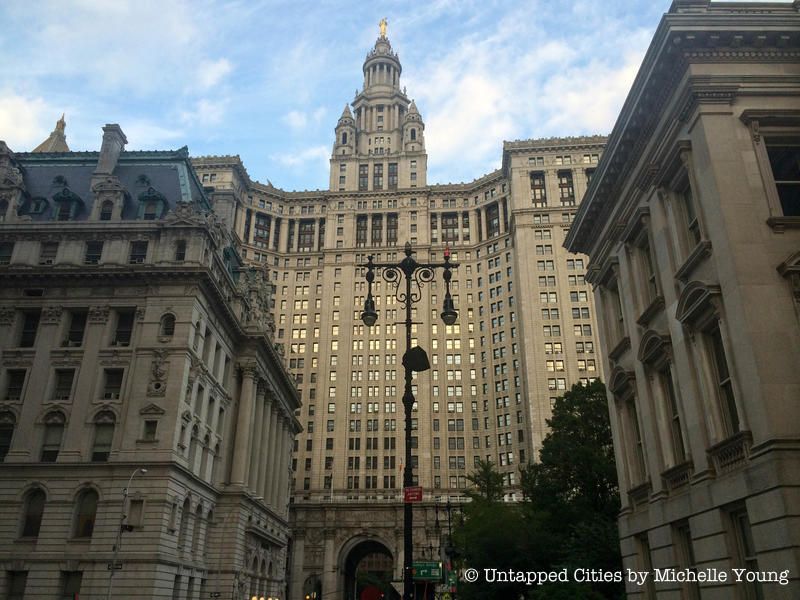
The Office of the Manhattan Borough President, on 1 Centre Street, 19th Floor South, is holding its Women’s History Month Celebration on March 20th, from 6pm to 8pm. Curated by Betsy Wade and Penelope Cox, the exhibit will be housed in the office art gallery, featuring items from women candidates and causes over the years. Guests are free to bring in photos, posters and other memorabilia, which will be photographed for the municipal archives. Following Monday night’s reception, the exhibit will be open to the public Monday-Friday from 8am to 6pm.
Next, don’t miss these 12 art installations in March, and check out Untapped Cities’ full list of upcoming tours. You can contact the author at AFineLyne.
Subscribe to our newsletter